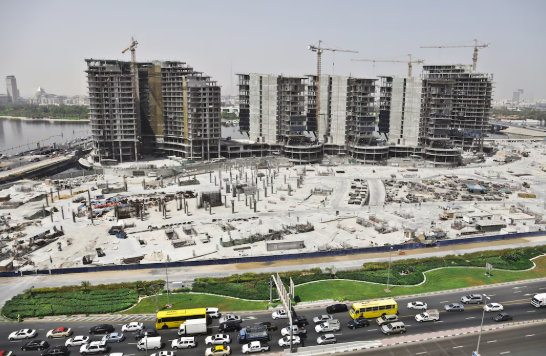
How Private Companies for Government Projects India Boost Economic Growth
India’s urban future depends heavily on its infrastructure: transit hubs, commercial facilities, public amenities, and responsive services. With government budgets stretched, countrywide demand rising, and cities expanding quickly, private sector participation has emerged as a key engine of change. Through BeTogether, Omaxe is demonstrating how well-structured collaborations between private developers and governments can deliver large-scale projects that not only fill infrastructure gaps but also generate economic dividends.
The Need for Private Collaboration in Public Projects
Public projects often involve complex coordination, high capital requirement, and long execution timelines. Governments alone may struggle with land acquisition, funding, technical capacity, and maintenance. Private companies bring agility, technical expertise, investment capacity, and streamlined execution. The result is faster delivery, better quality, higher customer satisfaction, and more efficient use of resources. These are the very qualities required for shaping tomorrow’s smart urban infrastructure.
BeTogether: A Case Study in Strategic Public-Private Partnerships
BeTogether is a brand created by Omaxe specifically to lead government-backed infrastructure and collaborative real estate projects. Its approach emphasizes joint developments, joint ventures, and PPPs (public-private partnerships) to execute projects in Tier-2 and Tier-3 cities. The initiative seeks not only to build infrastructure but to revitalize existing or under-utilized assets, bringing new value to stakeholders and communities.
A flagship example: BeTogether has been awarded a contract by the Uttar Pradesh State Road Transport Corporation (UPSRTC) to modernize six major bus terminals under a PPP model. Cities involved include Ghaziabad, Lucknow (Gomti Nagar & Amausi), Prayagraj, Kaushambi, and Ayodhya.
Economic Impacts: Jobs, Revenue & Local Growth
- Investment & Revenue Generation
The UPSRTC bus terminal project alone involves an investment of approximately ₹2,700 crore, with expected revenue generation above ₹4,700 crore. The combination of commerce (retail outlets, food courts, commercial space) with infrastructure ensures that public projects are not just cost centers but also sources of recurrent revenue.
- Increased Employment & Indirect Activity
Construction of these terminals creates immediate jobs: skilled and unskilled labor, engineering, architecture, suppliers of materials, etc. Once operations begin, further employment springs up: facility management, cleaning, retail staff, security, EV charging station operators. The ripple effect boosts local economies by injecting income and demand for ancillary services.
- Real Estate Appreciation & Commercial Ecosystem Activation
Revamped infrastructure attracts investment nearby. Areas surrounding upgraded bus terminals become prime zones for retail, services, hospitality, and residential developers. Improved connectivity, amenities, and visibility make them more desirable. Commercial spaces built as part of these projects help local businesses thrive. These spillover effects raise land values, generate more local tax revenue, and strengthen property markets.
- Improved Public Services & Accessibility
Modern terminals with amenities such as AC waiting areas, escalators and lifts, digital signage, clean washrooms, EV charging facilities significantly enhance the user experience for commuters. Enhanced public infrastructure means easier daily life, reduced travel stress, more inclusive mobility, and often improved safety and hygiene. These improvements are especially important in cities where infrastructure has lagged.
How the Model Works: Key Success Factors
BeTogether’s strategy shows several enabling features that make these public-private infrastructure projects successful:
- Clear PPP Frameworks: Contracts like the UPSRTC bus terminals modernization are defined with clear scopes, revenue expectations, maintenance obligations, and commercial components. This helps minimize delays and conflicts.
- Mixed-Use Integration: Including commercial amenities (retail, food courts, office space, parking) ensures projects are financially sustainable and serve more functions than merely transit. The commercial aspects often subsidize or improve public utility.
- Strategic Location Selection: Projects are placed in cities or zones with significant commuter traffic or residential catchments to ensure high utilization Lucknow, Ghaziabad, Ayodhya etc.
- High-Quality Amenities & Design: Amenities such as lifts, AC lounges, digital information systems, cleanliness, security, EV charging points enhance user satisfaction, ensuring usage and revenue. Good design also boosts confidence among investors and local businesses.
- Scalability & Repetition: BeTogether aims to replicate this model across multiple terminals and cities, creating economies of scale and learning curves that reduce cost overruns and improve execution.
Broader Economic Implications
Urban Development Beyond Major Cities
By investing in cities beyond just Delhi or Mumbai, BeTogether helps decongest metros and spread growth more evenly across regions. Development in Tier-2 & Tier-3 cities creates economic uplift for smaller towns and helps balance migration.
Infrastructure as Employment Multiplier
Projects like these generate employment not only directly in construction but also in associated sectors: transportation, retail supply chain, hospitality, maintenance. Local businesses and services benefit enormously from increased foot traffic and spending.
Tax Revenues & Government Savings
Private companies handling infrastructure relieve some burden off public finances. The government can focus resources elsewhere, while improved infrastructure leads to higher tax base (property, commerce) and savings in public service delivery (better transport lowers subsidies, etc.).
Encouraging Private Sector Confidence
When private firms deliver successful public infrastructure projects, investor confidence in PPP models, regulatory clarity, and partnership frameworks improves. This encourages further investment in areas like urban utilities, smart transit, public amenities, and housing.
Why BeTogether Stands Out
BeTogether is a brand explicitly oriented toward connecting the private developers’ execution strength with public projects that have high community impact. By focusing on joint ventures, public-private partnerships, and reviving stressed / incomplete projects, BeTogether combines Omaxe’s legacy in real estate with social infrastructure needs. Its portfolio bus terminal modernization, townships, collaborative developments illustrates its ability to deliver both public utility and commercial viability.
Challenges & How They Are Addressed
Even with strong models, certain obstacles arise:
- Regulatory Delays & Land Acquisition: Projects can be delayed due to approval lags or land issues. BeTogether’s partnership approach with governments and local bodies helps mitigate land acquisition delays and regulatory friction.
- Financing & Risk Sharing: High investment is required up front. PPP models help distribute risk, while commercial components (retail, office, real estate) help recover costs over time.
- Maintaining Quality & Operations: Infrastructure must be maintained after construction operations, cleaning, safety, etc. BeTogether integrates design for durability and plans for ongoing operations and maintenance.
- Ensuring Connectivity & Demand: Infrastructure must be accessible and usable: good road links, public transport, sufficient parking, adjacent residential/commercial density to ensure usage. BeTogether’s site and location selection appears to focus on this.
Conclusion
The role of private companies for government projects India is not just supplementary it is essential for unlocking India’s infrastructure-driven economic potential. When private firms partner with public authorities in PPPs, joint ventures, and collaborative models, they deliver infrastructure more efficiently, with better design and amenities, and create sustainable revenue streams.
BeTogether exemplifies how such models can be executed: by modernizing transit assets like bus terminals, integrating commercial components, selecting strategic locations, and ensuring quality execution and operations. These projects not only boost mobility, job creation, and commerce but also lift quality of life, encourage balanced urban growth, and foster regional development.
As India continues its urbanization journey, projects like BeTogether’s will play a central role in shaping smart, resilient, and inclusive urban economies. For governments, investors, and communities, the path forward is clear: embrace private participation, ensure strong partnerships, design for mixed utility, and deliver with quality. When done right, the result is not just infrastructure but impact.
FAQs
How do private companies for government projects India contribute to infrastructure growth?
They bring investment, technology, and faster execution, helping governments complete large infrastructure projects efficiently.
What are the benefits of involving private companies for government projects India?
Benefits include reduced public spending, improved quality, timely delivery, and innovative solutions for urban development.
Which sectors in India see the most collaboration with private companies for government projects India?
Key sectors include transport, smart cities, renewable energy, housing, and commercial real estate.
How do private companies ensure long-term success in government projects?
By using public-private partnership (PPP) models, focusing on maintenance, and integrating revenue-generating commercial spaces.
What role does BeTogether play among private companies for government projects India?
BeTogether partners with state agencies to modernize bus terminals and other public assets, boosting local economies and improving public services.





